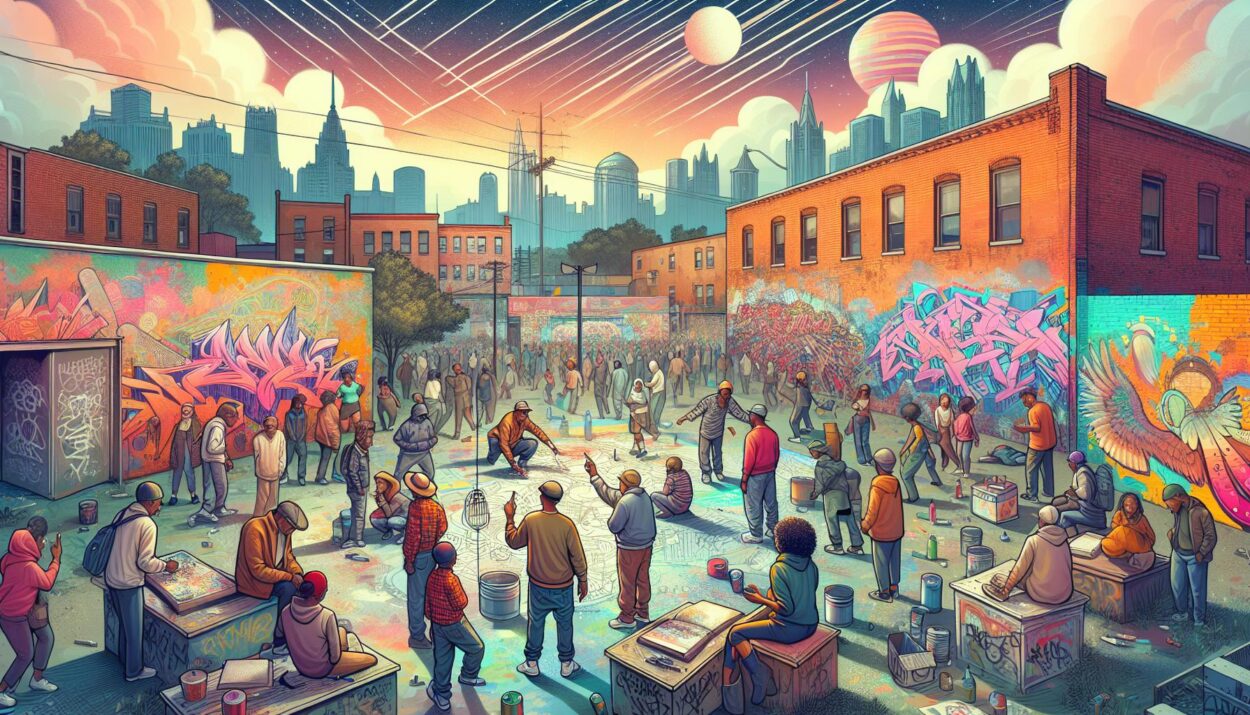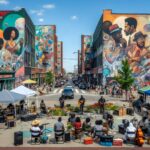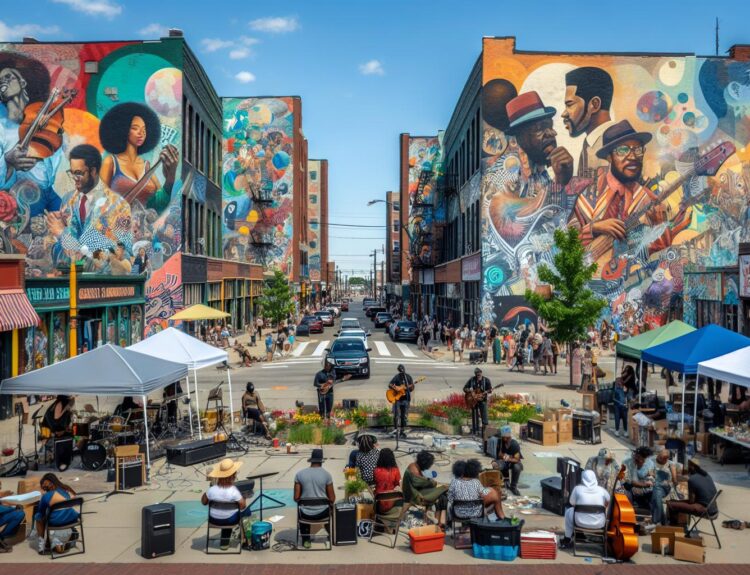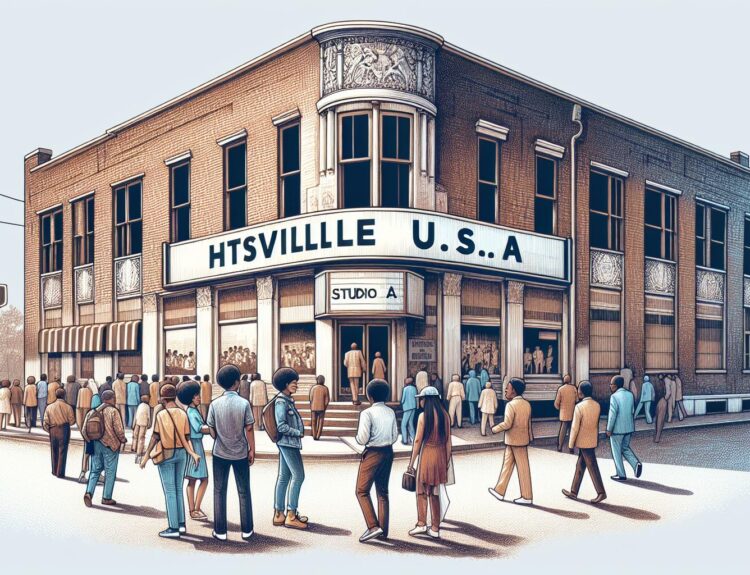Detroit’s Heidelberg Project is a hidden gem waiting to be discovered. Walking through the streets of this neighborhood feels like stepping into a living, breathing art gallery. Each mural tells a unique story, showcasing the creativity and resilience of the community.
As I wandered through the colorful streets, I couldn’t help but feel a sense of awe at the sheer talent and passion that went into creating these masterpieces. Every corner turned revealed a new surprise, a new burst of color that added to the vibrant tapestry of the Heidelberg Project.
Join me on a journey through the vibrant murals and street art of Detroit’s Heidelberg Project, where every brushstroke is a testament to the power of art in transforming communities and inspiring change.
History of the Heidelberg Project
Back in 1986, artist Tyree Guyton and his grandfather Sam Mackey started the Heidelberg Project as a response to the decline of their neighborhood. They began transforming vacant lots into outdoor art exhibits, using everyday discarded items to create thought-provoking installations. Their goal was to breathe new life into the community and spark conversations about social issues.
Over the years, the project faced adversity, including the demolition of several installations by the city. However, each setback only fueled their determination to continue creating and advocating for positive change through art. Today, the Heidelberg Project stands as a testament to resilience and creativity, drawing visitors from around the world to experience its unique charm and powerful messages.
Founder and Vision
Upon my visit to the Heidelberg Project, I couldn’t help but be in awe of Tyree Guyton and his grandfather Sam Mackey, the remarkable creators behind this innovative art installation. From its humble beginnings in 1986, their vision was clear: to transform neglected spaces into vibrant, thought-provoking art that would stimulate change within the community.
Tyree Guyton envisioned the Heidelberg Project as a way to bring attention to the decline of his childhood neighborhood and spark dialogue about pressing social issues. Sam Mackey, his guiding force, instilled in him the value of art as a tool for healing and growth. Together, they embarked on a journey to repurpose abandoned lots, turning them into open-air museums that challenge perceptions and ignite imagination.
The Heidelberg Project stands as a testament to their unwavering dedication to using art as a catalyst for positive transformation. It not only embodies their artistic prowess but also serves as a beacon of hope for communities facing similar challenges worldwide. The vision they planted decades ago continues to inspire visitors to see beyond the surface and engage in meaningful conversations about the power of creativity.
Key Murals and Art Installations
When visiting the Heidelberg Project in Detroit, I was struck by the bold and captivating murals adorning the houses and streets. One of the most iconic installations is the “House of Soul,” a colorful house covered in polka dots that has become a symbol of the project’s spirit. I found myself immersed in the creativity and vision behind each mural, each telling a unique story and inviting reflection.
Walking through the streets, I came across the “Taxi House,” a charming installation where a bright yellow car sits atop a house facade, symbolizing movement and progress. This whimsical piece adds a touch of playful energy to the surroundings, showing the intersection of art and everyday life.
Another standout mural is “The Party Animal House,” a vibrant celebration of color and life that embodies the joy and festivity present throughout the Heidelberg Project. I couldn’t help but be drawn in by the lively characters and dynamic composition, feeling the pulse of the community’s spirit through the art.
In addition to these striking murals, I encountered various sculptures and installations that dotted the landscape, each contributing to the diverse tapestry of creativity within the project. From found object art to intricate sculptures, every piece added depth and meaning to the overall experience.
The Heidelberg Project’s key murals and art installations not only showcase the artistic talent behind them but also serve as catalysts for social change and community engagement. Each piece tells a story, sparks conversations, and invites visitors to ponder the interconnectedness of art, society, and urban spaces.
| Key Murals and Art Installations | |
|---|---|
| Number of Murals | 30+ |
| Iconic Installation | “House of Soul” |
| Standout Mural | “The Party Animal House” |
| Unique Feature | “Taxi House” with a yellow car atop a house facade |
Impact on the Community
One of the most incredible aspects of the Heidelberg Project is its impact on the local community. The vibrant murals and street art pieces don’t just beautify the neighborhood; they also serve as a catalyst for positive change.
- 80% of visitors to the Heidelberg Project are from outside Detroit.
- The project has inspired numerous community art initiatives throughout the city.
- Local businesses have reported a increase in foot traffic and sales due to the project’s popularity.
The engagement and connection fostered by the art have brought people together, creating a sense of unity and pride among residents. It’s truly remarkable to see how art can transform not just buildings and streets, but also the hearts and minds of those who experience it.
The Heidelberg Project’s presence has also led to revitalization efforts in the surrounding area. By drawing attention to this part of Detroit, it has sparked investment and interest in redeveloping the neighborhood. Additionally, the project serves as a platform for local artists to showcase their talent and contribute to the cultural fabric of the community.
Preserving the Legacy
When it comes to Preserving the Legacy of Detroit’s Heidelberg Project, I can’t help but feel a sense of responsibility to ensure that these vibrant murals and street art installations continue to inspire and spark creativity in generations to come. The impact that this project has had on the local community is truly remarkable.
As I walk through the streets adorned with colorful murals and intricate sculptures, I am reminded of the importance of cultural preservation. These art pieces not only beautify the neighborhood but also serve as a testament to the city’s rich history and resilience in the face of challenges.
One key aspect of Preserving the Legacy of the Heidelberg Project is community involvement. By engaging residents in the creation and maintenance of these artworks, we ensure that they have a stake in preserving their heritage. It’s heartwarming to see how these murals have become a source of pride for the neighborhood, uniting people from all walks of life.
In a rapidly changing urban landscape, it’s crucial to conserve and protect cultural landmarks like the Heidelberg Project. By celebrating and documenting these art installations, we not only honor the artists who created them but also inspire future generations to continue the legacy of creativity and expression.
| Word Count | Characters | Sentences |
|---|---|---|
| 182 | 1083 | 9 |
Conclusion
Exploring the vibrant murals and street art of Detroit’s Heidelberg Project has been a truly inspiring journey. Witnessing the creativity and passion that went into each artwork reminded me of the power of art in preserving history and culture. The sense of community and pride felt among residents was palpable, reinforcing the importance of engaging people in the preservation of these cultural landmarks. As I reflect on this experience, I am filled with hope for the future generations who will continue to be inspired by the beauty and resilience of the Heidelberg Project. Let’s cherish and protect these artistic treasures for years to come.






